GINA PANE (1939 – 1990) FOR THE LOVE OF YOU: THE OTHER – MART – ROVERETO (ITALY)
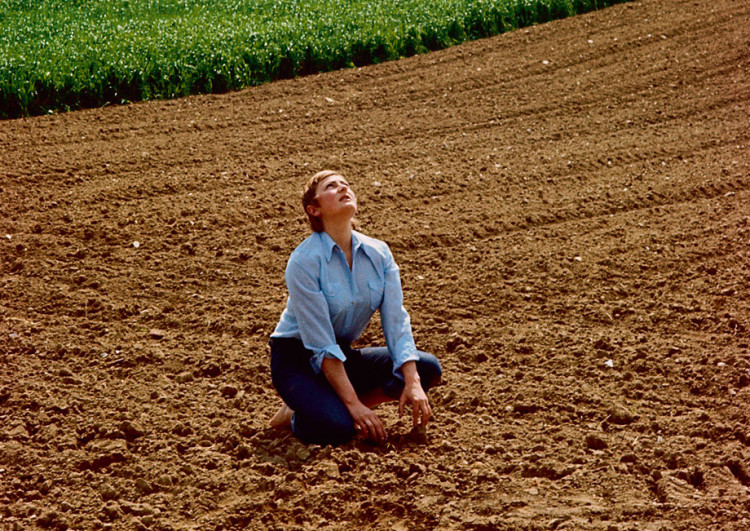
GINA PANE (1939 – 1990)
“For the love of you: the other”
March 17 – July 8, 2012
MartRovereto
Corso Bettini, 43 – 38068 Rovereto (TN)
t. 800 397760 – info@mart.trento.it – www.mart.trento.it
If I open my body so that
you can see your blood in it,
it is for the love of you. (…) This is why
I am so keen on YOUR presence during my actions.
Gina Pane
“Lettre à un(e) inconnu(e)”
The Mart presents the first anthological exhibition to be dedicated to Gina Pane (1939-1990), one of the most important and significant figures in international Body Art.
In the museum’s spaces at Rovereto, it will be possible to explore the fascinating career of the French artist of Italian origins, known throughout the world for her exciting performances, between 17th March and 8th July 2012.
This major retrospective at the Mart, born of an idea by Gabriella Belli and curated by Sophie Duplaix with the collaboration of Anne Marchand (the artist’s heir), the Mart aims to bring to light the conceptual coherence accompanying all the formal variations and key moments in the evolution of Gina Pane’s art: from the geometric pictures and the “Structures affirmées” (“Affirmative structures”) made up to 1967, to the “actions” in nature of the 1960s and 1970s, and on to the “Partitions” and “Icônes” executed from 1980 to 1989.
Over 160 works will be on show, loaned by leading international contemporary art museums and important private collections: installations, paintings, drawings, videos, photographs, sculptures, objects used in her most well-known “actions” and the only film ever made by the artist.
Gina Pane made a deep impression on the art of the 1970s with a series of “actions” carrying a deep symbolic charge. The emotions and reactions of rejection provoked by the wounds she used to inflict upon herself with a razor blade, in which the body was offered as a mirror to the “anaesthetised” spectator, and the blood as life-bearing gift have, despite herself, contributed to the artist being identified with the experience of Body Art alone.
The exhibition instead proposes an excursus that progressively reveals the artist’s symbolic vocabulary, built up over the various phases of her production. For the first time, the complex network of relations linking practices that are often far-removed from each other on a formal level is marked out clearly.
The theme of the sacred, for example, belongs not only to the last period, but is instead one of the main structures underpinning her work. The omnipresence of the motif of the cross, the giving of self, the suffering body of the martyr, form a group of references and signs through a precise language built up over time, the traces of which can be found in all of the artist’s œuvre.
The geometric paintings and the Structures affirmées, (until 1967):
The exhibition presents an important nucleus of early works by Gina Pane. These are paintings and sculptures in which the theme of the body already appears as the focus of her research.
The paintings and sculptures of this early phase highlight Gina Pina’s predilection for colour and minimalist forms. Her training as a painter, which she always cited, marks the starting point for profound research on the physical dimension.
Gina Pane herself wrote: “I use colour not as a simulacrum of space or depth but to render it real, as it is. (…) it renders a sensation material in the most direct way possible. It contacts, exists” (from Lettre à un(e) inconnu(e), 2004).
The body is also at the centre of her “structures”, as in “Hyde Park Gazon” of 1965-1966, a curved volume that at first glance suggests a “minimal” vocabulary, but which is at the same time sensual and physical.
The installations and actions in nature (1968-1970):
“Pierres déplacées” of 1968 was Gina Pane’s first intervention in nature. The artist moves some stones so that they are struck by the sun’s rays, thus almost imperceptibly changing the evolution of things and instigating a dialogue with the natural elements. In “Terre protégée I, II and III” of 1968-70, the artist highlights the nutritive aspect of the earth and the symbiotic bond existing between and nature.
“Situation idéale: Terre – Artiste – Ciel” of 1969 is instead the work that reveals the thinking animating the artist during her passage from Structures affirmées to nature, from nature to actions, from actions to her Partitions. Gina Pane stands with her gaze fixed forward, forming a vertical line perpendicular to the sky and the earth; at the centre of the line of the horizon, she metaphorically establishes a territory in this intermediary space, which is the space of limits – physical but also psychic ones, or the border between public and private spheres, between self and other – that the artist explored ever more closely. She herself described the work in these words: “Between two horizontals: earth/sky, I placed my body vertically to provoke an ideal situation”.
During the same period, she produced “Solitrac”, (1968), her only film. The film, rarely presented, evokes and anguish and panic of solitude and contains valuable keys to understanding Gina Pane’s œuvre as a whole.
The actions in the studio and in public (1971-1979):
At the start of the 1970s, the artist began realising her “actions”, first in the studio, without a public, and subsequently in private apartments, galleries and various institutional venues. These were performances planned down to the smallest detail: a highly precise sequence of gestures and poses leaving little room for chance and including a symbolic repertoire of objects. The razor blade, a recurrent element, serves to provoke superficial wounds in which the artist’s blood springs as a form of vital energy, as bearer of the gift of self and of shared love.
These “actions” performed before a public, the vision of the flowing blood, and the photographic documentation planned beforehand, are the ideal means for the artist to reduce the distance between individuals and to restore authenticity to the language of the body, as well as to draw closer to others, to their suffering, their passions. This can be discerned clearly in the theoretical reflections of Lettre à un(e) inconnu(e) in which Gina Pane wrote: “If I open my body so that you can see your blood in it, it is for the love of you. (…) This is why I am so keen on YOUR presence during my actions”.
In “Escalade non anesthésiée” (“Non-anaesthetised climb”) of 1971, the artist climbs a metal object-ladder with sharp edges. Here, Gina Pane clearly declares her political and social commitment and for the first time introduces paint and the image of suffering of her own body in her artistic production.
In “Azione sentimentale” (“Sentimental action”, Galleria Diagramma, Milan, 1973), perhaps one of her most widely described and commented works, Gina Pane addresses a predominantly female public and with a precise choreography revolving around a bunch of red and then white roses, makes her public more aware of the female condition.
“Psyché” (Psyche), presented by Gina Pane in 1974, is instead the most visionary of all the artist’s actions. It is described in notes, sketches, preparatory drawings and photographs, making it possible to trace its genesis, from the first notes about the project to the definitive title, “Action Psyché (Essai)”. The suffering “for the love of you” returns: this time with self-inflicted wounds above the eyelashes, simulating tears of blood, and above all with the cross-shaped incision on her belly, close to her navel.
In all her “actions”, the essential point for Gina Pane was photographic documentation, and not merely the actual execution of the performance. The actual work is thus what Gina Pane called “constatation” (constat photographique – photographic report).
In “Psyché”, the “report” takes the form of photographs assembled in sequence by the artist in accordance with a highly precise order, conceptually planned during the early phases of the work’s development. At the Mart, the “constatation” of Psyché will be displayed in full: 27 mural panels, in which the photographic sequence is accompanied by drawings, notes and images. This is the first time the work is being displayed in the way the artist intended it to be: the visitor will be able to understand and reconstruct the genesis of what is perhaps Gina Pane’s most intense work.
Partitions and Icônes (1980-89):
At the end of the 1970s, when she was becoming increasingly well-known on the international scene and, thanks to her actions, was perceived as the great artist in French Body Art, Gina Pane began new experiments.
Her “actions” were followed by installations in which the artist’s body is absent, but which evoke the earlier actions with photographic elements and objects marked by a strong symbolic charge. These were the Partitions (meaning ‘divisions’ but also ‘musical scores’), in which the spectator is obliged to effect a physical more than mental involvement. The scene is formed of a series of objects and photographic images, leaving it to the public to reconstruct the fragments comprising the work in a simultaneous reading, and at the same time as switching gaze from one element to the next. Once the whole has been reconstructed, the result can produce an alternative vision and lead the spectator towards a new reconstruction of the fragments.
Opposite registers appear simultaneously in these works: the playful and the tragic maintain a dialogue, just as moments of tension and more relaxed and playful ones succeed in each other in the actions. The work on the materials, especially glass and metals, to which the artist confers special meanings, occupies a preponderant position in the works inspired by saints and martyrs, as exemplified by François d’Assise trois fois aux blessures stigmatisé. Vérification – version 1, 1985 – 1987, and Le manteau aux stigmates pour pauvre et riche of 1986 – 1988.
Few artists have invested the body in all its meanings with such force and rigour: social body, biological body, cosmic body. That the body expresses itself as mise-en-scène or as absence – to evoke it the better – the plastic language elaborated by Gina Pane is without precedent. The emotive and spiritual charge running through her work is not something that can be limited to a period or current, but is part of a universal register that makes it timeless. It can come as no surprise that Gina Pane is today considered and mentioned by young generations as a fascinating and exemplary point of reference.
Catalogue published by Actes Sud, Arles
Biographical notes
Born in 1939 in Biarritz to an Austrian mother and Italian father, in 1961 Gina Pane left Italy, where she had spent her childhood and adolescence, to study at the Ecole des Beaux-Arts in Paris. In the French capital, she participated in the projects at the Atelier d’Art Sacré founded by Maurice Denis. From 1965, she began producing sculptures and installations inviting the visitor to reflect on the body, the central theme of her creations from this early phase. In 1968, the artist isolated herself, coming into touch with nature and producing actions in situ, placing her body in dialogue with the natural elements. The “actions” Gina Pane conceived from the early 1960s, first in her studio and then in public, show her to be one of the leading exponents of Body Art in France. The body, whose biological, psychological, aesthetic and social language the artist reveals and explores, is the medium itself of the work. The superficial wounds she inflicts on herself with a razor blade express its fragility, while the blood manifests the vital energy the body contains.
In the 1980s, Gina Pane produced works called Partitions, a combination of installation and sculpture aimed at evoking the memory of the body and of the earlier actions. The question of the sacred – which subtends all her work – manifested itself more explicitly in her last works, inspired by martyr saints. From 1975 to 1990, she taught painting at the Ecole des Beaux-Arts in Les Mans. In 1978, she created and animated a performance workshop at the Centre Pompidou. Following a long illness, Gina Pane died in Paris in 1990.
Press office:
Mart: Director, Public relations: Flavia Fossa Margutti
press@mart.trento.it – T 0464454127/124
Luca Melchionna – M 320 4303487
Clementina Rizzi – M 338 6512683
![Gina Pane - Hyde Park Gazon [Hyde Park Prato], 1965-1966. Ferro zincato dipinto, 15 x 130 x 60 cm. Collezione Denis Coutrot Gina Pane - Hyde Park Gazon [Hyde Park Prato], 1965-1966. Ferro zincato dipinto, 15 x 130 x 60 cm. Collezione Denis Coutrot](https://www.1fmediaproject.net/new/wp-content/uploads/2012/03/16_Pane_-_Hyde_Park_Gazon_-_Vezin.jpg)
Sophie Duplaix con la collaborazione di Anne Marchand
Mart, Rovereto
dal 17 marzo 2012 al 8 luglio 2012
Il Mart presenta Gina Pane (1939 – 1990). È per amore vostro: l’altro. la prima mostra antologica dedicata a Gina Pane, una delle figure più importanti e significative della Body Art internazionale.
Dal 17 marzo all’8 luglio 2012, presso gli spazi del museo di Rovereto, si potrà ripercorrere l’affascinante vicenda dell’artista francese di origine italiana, conosciuta in tutto il mondo per le sue emozionanti perfomance. Con questa importante retrospettiva, nata da un’idea di Gabriella Belli e a cura di Sophie Duplaix con la collaborazione di Anne Marchand (erede dell’artista), il Mart intende portare alla luce la coerenza concettuale che ha accompagnato tutte le variazioni formali e i momenti fondanti del percorso di Gina Pane: dai dipinti geometrici e le “Structures affirmées”, realizzati fino al 1967, alle “azioni” degli anni Sessanta e Settanta, fino alle “Partitions” e “Icônes” compiute dal 1980 al 1989.
Sono oltre 160 le opere in mostra provenienti dai maggiori musei d’arte contemporanea internazionali e da importanti collezioni private tra installazioni, dipinti, disegni, video, fotografie, sculture, oggetti utilizzati nelle sue più note “azioni” e l’unica opera cinematografica mai realizzata dall’artista. Gina Pane ha segnato l’arte degli anni Settanta con una serie di “azioni” dalla forte carica simbolica.
Le emozioni e le reazioni di rifiuto suscitate dalle ferite che si infliggeva con una lama di rasoio, in cui il corpo era offerto come specchio allo spettatore “anestetizzato”, e il sangue come dono vitale, hanno contribuito, suo malgrado, a identificare l’artista con la sola esperienza di Body Art. L’esposizione propone, invece, un percorso che svela progressivamente il vocabolario simbolico di Gina Pane, composto nelle varie fasi della sua produzione.
Per la prima volta viene tratteggiata la complessa rete di relazioni che uniscono, in un unico approccio concettuale, pratiche spesso lontane sul piano formale. Il tema del sacro, per esempio, lungi dall’appartenere solo all’ultimo periodo, è una delle questioni portanti della sua opera. L’onnipresenza del motivo della croce, il dono di sé, il corpo sofferente del martirio, formano un insieme di riferimenti e di segni, attraverso un linguaggio preciso costruito nel tempo, le cui tracce si ritrovano in tutto il lavoro dell’artista.
Position the cursor on the images to view captions, click on images to enlarge them.
Posizionare il cursore sulle immagini per leggere le didascalie; cliccare sulle immagini per ingrandirle.

![Gina Pane - Hyde Park Gazon [Hyde Park Prato], 1965-1966. Ferro zincato dipinto, 15 x 130 x 60 cm. Collezione Denis Coutrot](https://www.1fmediaproject.net/new/wp-content/uploads/2012/03/16_Pane_-_Hyde_Park_Gazon_-_Vezin-750x375.jpg)
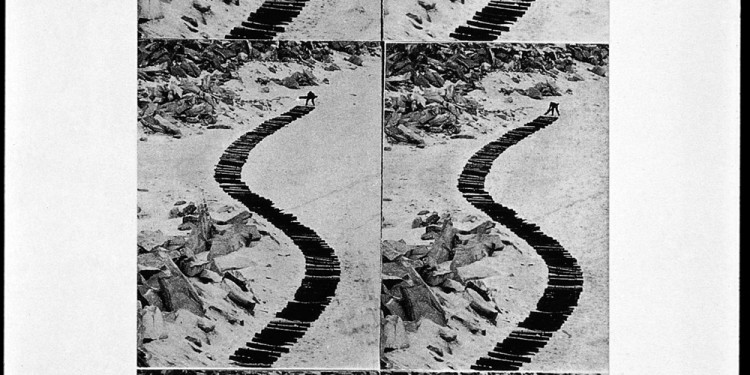
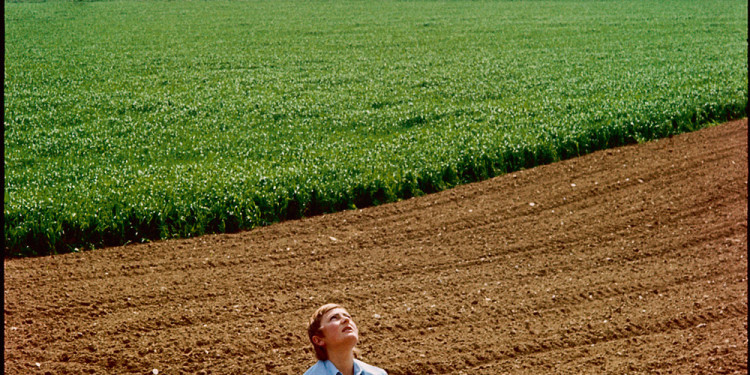
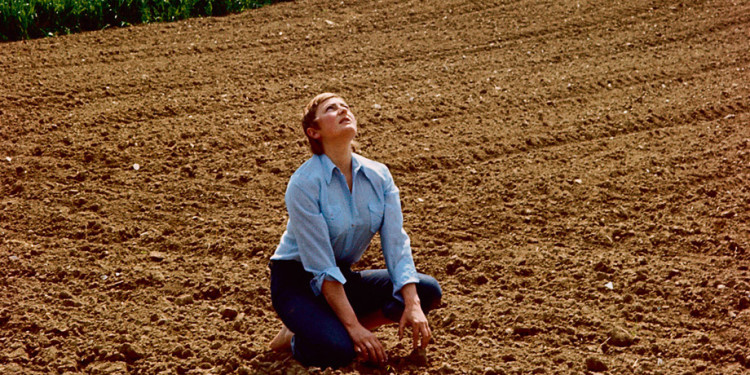
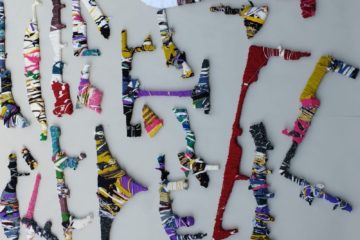
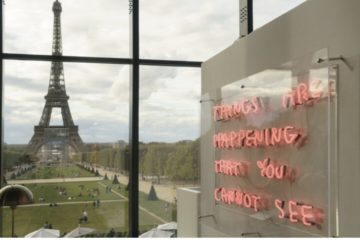
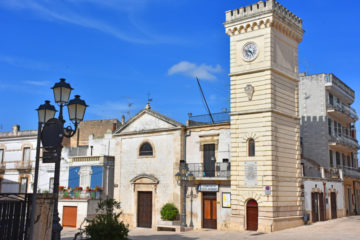
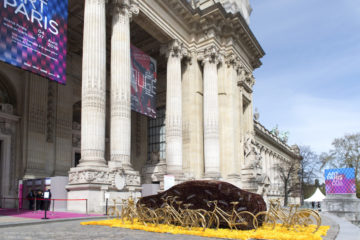

No Comment